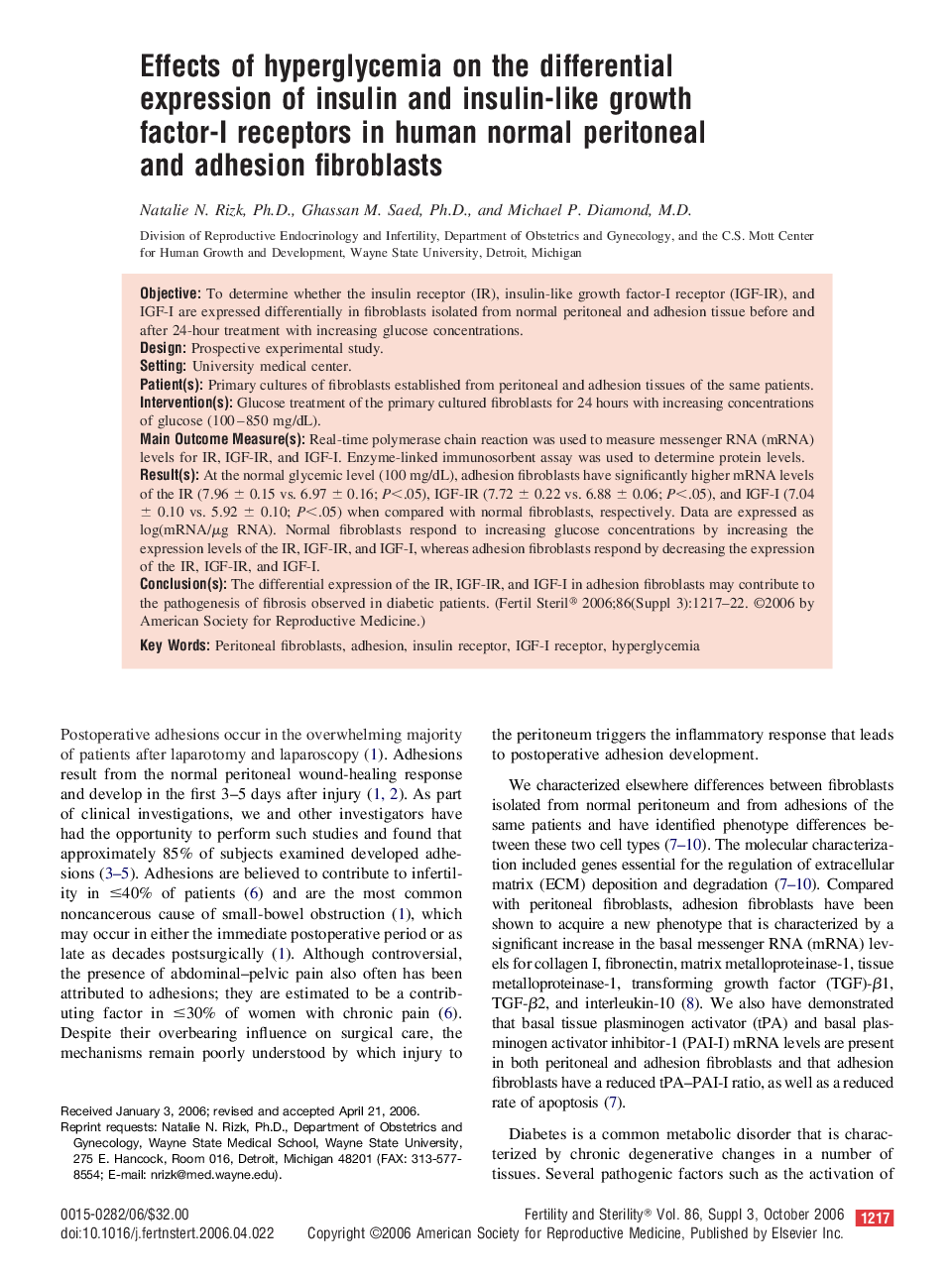| Article ID | Journal | Published Year | Pages | File Type |
|---|---|---|---|---|
| 3940794 | Fertility and Sterility | 2006 | 6 Pages |
ObjectiveTo determine whether the insulin receptor (IR), insulin-like growth factor-I receptor (IGF-IR), and IGF-I are expressed differentially in fibroblasts isolated from normal peritoneal and adhesion tissue before and after 24-hour treatment with increasing glucose concentrations.DesignProspective experimental study.SettingUniversity medical center.Patient(s)Primary cultures of fibroblasts established from peritoneal and adhesion tissues of the same patients.Intervention(s)Glucose treatment of the primary cultured fibroblasts for 24 hours with increasing concentrations of glucose (100–850 mg/dL).Main Outcome Measure(s)Real-time polymerase chain reaction was used to measure messenger RNA (mRNA) levels for IR, IGF-IR, and IGF-I. Enzyme-linked immunosorbent assay was used to determine protein levels.Result(s)At the normal glycemic level (100 mg/dL), adhesion fibroblasts have significantly higher mRNA levels of the IR (7.96 ± 0.15 vs. 6.97 ± 0.16; P<.05), IGF-IR (7.72 ± 0.22 vs. 6.88 ± 0.06; P<.05), and IGF-I (7.04 ± 0.10 vs. 5.92 ± 0.10; P<.05) when compared with normal fibroblasts, respectively. Data are expressed as log(mRNA/μg RNA). Normal fibroblasts respond to increasing glucose concentrations by increasing the expression levels of the IR, IGF-IR, and IGF-I, whereas adhesion fibroblasts respond by decreasing the expression of the IR, IGF-IR, and IGF-I.Conclusion(s)The differential expression of the IR, IGF-IR, and IGF-I in adhesion fibroblasts may contribute to the pathogenesis of fibrosis observed in diabetic patients.
